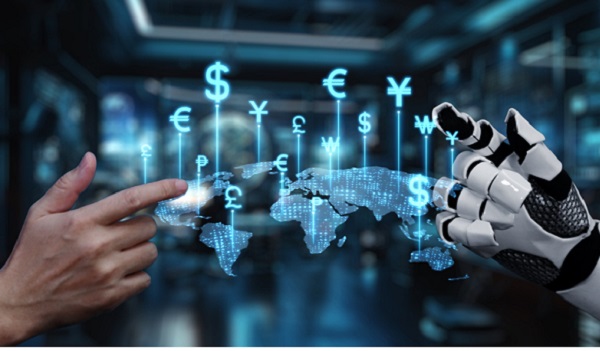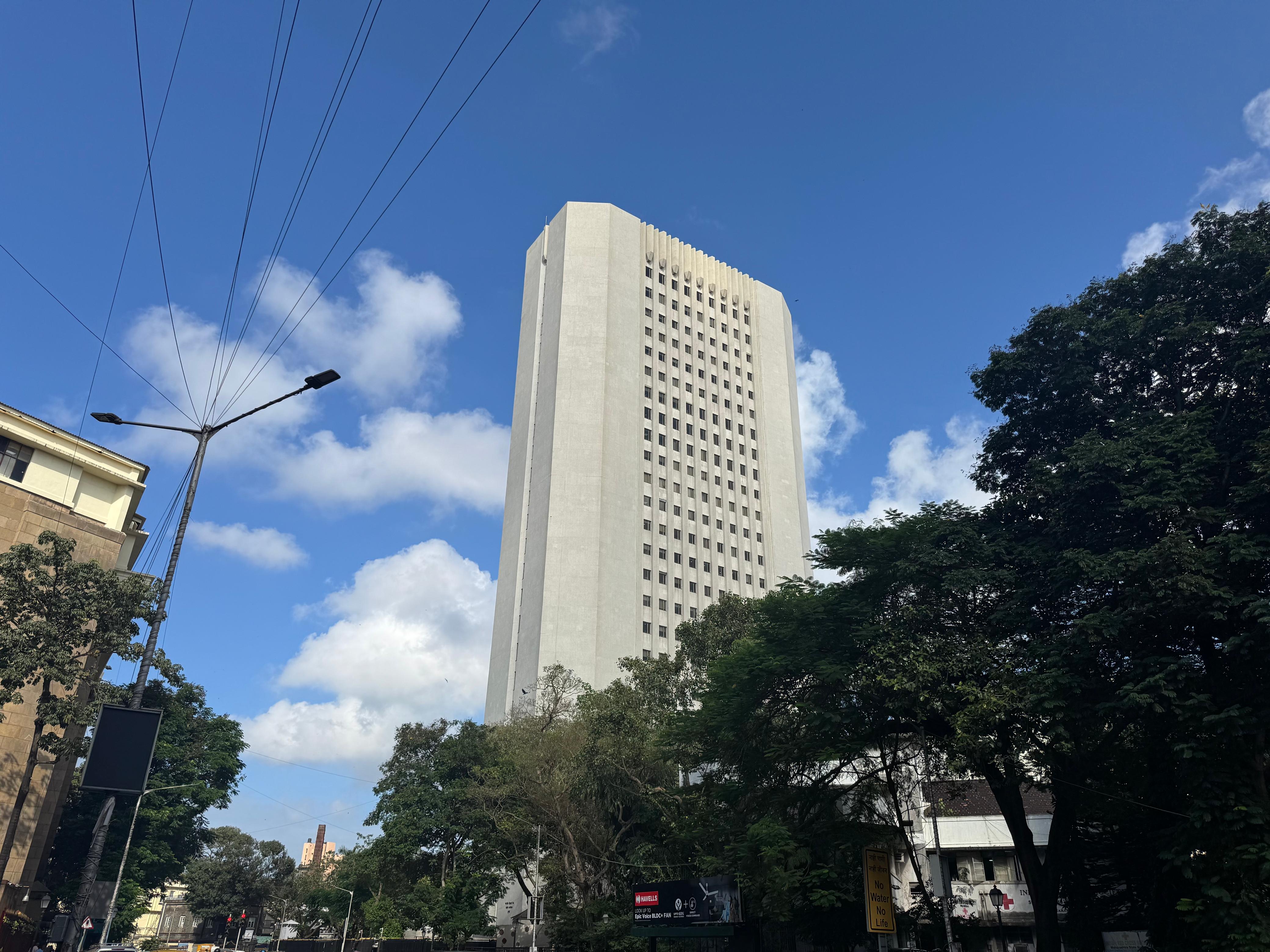.png)

Venkat Thiagarajan is a currency market veteran.
November 18, 2025 at 5:58 AM IST
Alvin Toffler’s 1990 book Power Shift: Knowledge, Wealth, and Violence at the Edge of the 21st Century is widely regarded as a foundational text for understanding the architecture of modern civilisation. Its enduring insight is that power is fluid, and it migrates with each technological and social transformation.
Toffler examined how the fundamental sources of power have evolved and argued that, throughout history, societies have relied on three pillars of influence: violence, wealth, and knowledge. He described how humanity’s sources of dominance shifted from the use of force to control of wealth and, finally, to mastery of knowledge, and he maintained that whoever controlled knowledge would shape the future.
In the Agricultural Age, power was defined by control over land and the ability to wield physical force. In the Industrial Age, wealth and ownership of capital determined dominance. In the Information Age, knowledge became the decisive advantage as data, communication, and media networks replaced machines as the central instruments of power.
In the same way that Toffler’s knowledge workers became the elites of the information age, AI mastery workers are now emerging as the new elites of the AI economy, and AI represents both an unprecedented growth opportunity and a strategic necessity. AI is not just a tool; it is the new currency of power.
In keeping with a world marked by near-continuous discontinuity, this article argues that exchange rate dynamics are also undergoing conceptual change, and that the determinants of modern exchange rates may increasingly reflect technology and innovation differentials rather than the interest rate differentials that shaped the previous era.
AI Debate
There is a natural tendency to overestimate the effects of technology in the short term while being blind to its much more profound long-term impact. As a result, our focus is currently narrow, and we are ignoring the potential of AI to transform the models and systems on which modern-day life runs. Hence, it is critical to first examine whether AI has revolutionary consequences or merely incremental effects.
Two historical developments come close to this present moment: electricity and containerisation.
Analogy with Electricity
From all the developments one sees, 2025 marks the transition of inference demand from experimentation to deployment. Although not all AI deployments are created equal, the speed of diffusion across early use cases is astounding, even for the most optimistic supporters of the technology. Productivity improvements will not be monumental on day one, but, as with any compounding effect, a faint whisper can rise to a deafening roar.
The significant breakthroughs achieved last year in inference-time reasoning and reinforcement learning are enabling use cases to broaden out and encourage significant adoption and investment across every industry. Just like electricity, AI will soon be table stakes for every enterprise.
If a country wants to be a leader in AI, we should ask what it actually means to lead in AI. And to answer that, we might take a step back and ask what it meant to lead in electricity.
Analogy with Containerisation
However, AI is not just another technological frontier. It is the foundation of future economic and geopolitical power. The realistic assessment is that the “new spring” for AI could boost productivity levels and elevate the GDP growth trajectory. It is projected to add nearly $15.7 trillion to global GDP by 2030, unlocking unprecedented productivity gains and accelerating innovation across sectors. AI technology could speed up research as much as tenfold, bringing about a phenomenon coined as “the compressed 21st century,” in which fifty to one hundred years of innovation might occur in the span of five to ten years.
So, just like electricity, AI is more than a tool; it is fast becoming a strategic asset that underpins global influence and drives socio-economic progress. Nations now treat algorithmic capability as a strategic resource comparable to oil or nuclear power, and hence it would rank as one of the primary drivers of a nation’s prosperity and its exchange rate going forward.
Global Leadership
What once centred on territorial conflicts, military alliances, and economic sanctions is now unfolding in the realm of technology, with AI playing a significant role and emerging as a defining force.
The AI economy is slowly emerging as the fifth industrial empire, one that colonises not land but cognition. Its frontiers are data pipelines, and its subjects are both human and algorithmic. It extracts from the earth through energy and minerals, from people through digital labour, and from institutions through dependency on proprietary systems.
True leadership will be defined not merely by owning the most advanced model but by mastering an integrated sovereignty stack, the combined control over hardware, software, data, energy, and the regulatory frameworks that underpin AI systems.
One of the most striking consequences of this competition is fragmentation, or what one may call the polarisation of the global landscape, and the current order of supremacy in the AI race can be classified as follows.
Global Leaders
Together, they are responsible for the vast majority of AI-related research activities. They are far ahead of other countries on AI-related patents, publications, and citations. They also make substantial investments in AI.
The US free-market system looks well-positioned to maintain a structural economic competitive advantage over China. Moreover, Stargate is a bold declaration that the US intends to dominate this space, leveraging its resources, innovation ecosystem, and political alignment.
Strong Economies
Canada, France, South Korea, and Sweden are relatively well-positioned to capture the benefits of AI, given their robust foundational enablers.
Passive Followers
AI Divide
The pace of AI adoption and the extent to which companies choose to use AI for innovation rather than efficiency gains alone will have a large impact on economic outcomes. Similarly, how countries choose to embrace these technologies, or not, will shape the extent to which their businesses, economies, and societies can benefit. The race is already on among companies and countries.
While the potential benefits of AI may be large, they are not likely to be distributed equally. Our simulated estimate of the impact of AI on the world economy is an average of the effects across different countries, sectors, and firms. There could be widening gaps among countries, sectors, firms, and workers.
AI has created a new digital divide by fracturing the world between nations with the computing power to build cutting-edge AI systems and those without it. The split is influencing geopolitics and global economics, creating new dependencies and prompting a desperate rush to avoid exclusion from a technology race that could reorder economies.
As the development and dissemination of this technology expand at an unprecedented rate, they will lead to significant changes in economic structure and financial systems. However, they also exacerbate existing competitions, creating a stark divide between states that are AI haves and AI have-nots.
This emerging AI divide means the leaders disproportionately benefit from AI advancements, while passive followers lag behind.
AI and Exchange Rates
The study of exchange rates is always suffused with empirical “puzzles,” many of which suggest a disconnect between exchange rates and macroeconomic fundamentals that is hard to rationalise with standard models.
While theories of exchange rate determination have explored concepts such as interest rate differentials that could explain the movement of global capital, there is little model-free empirical evidence to indicate which mechanisms are most likely at play in driving exchange rates at any given time.
In particular, there is a lack of consistent correlation between various macroeconomic aggregates and exchange rates, both contemporaneously and in a forecasting sense, implying that the theory of exchange rate determination has also experienced a power shift. Economies and their exchange rates are not insular; they interact within a global marketplace.
What distinguishes this emerging world order is its invisibility. It claims to be universal, yet it remains concentrated. It promises inclusion, yet it depends on exclusion. As in past industrial eras, the winners are those who control the infrastructure of progress. The rest of the world supplies the inputs, labour, energy, minerals, and data, while ownership and profits accumulate at the centre.
The global race for AI is undeniably driving growth, but it is also redrawing the map of power. The question is no longer whether AI will transform economies, but who will own that transformation and at what cost. It could replicate the extractive logic of previous empires, only this time through technology rather than conquest. The exchange rate is becoming the medium through which the relative strength of technological prowess is measured.
Micro and macro factors underpin the impact of AI on global economic activity to broadly the same extent, and they are likely to matter in the dynamics of exchange rates. The most material micro factors relate to the dynamics of firms’ adoption and absorption of AI. The key macro factors include AI investment and research capabilities, as well as enablers such as digital absorption, human capital, connectedness to global flows, and labour-market structures and flexibility.
Digital data now makes up a larger share than in the past of international cross-border flows in the form of knowledge and information exchange, as well as direct transactions such as cross-border e-commerce. These data flows have already given globally connected, digitally advanced economies a material boost.
AI haves are expected to command a premium over AI have-nots as growth differentials support them. Moreover, AI haves would have higher private-sector capital formation, and the resultant demand for money could outstrip domestic savings, keeping their interest rates elevated. Technological innovations typically drive economic booms, leading to rising prosperity and consumption, which results in strong demand and inflation. Even through the familiar prism of interest rate differentials, the exchange rate of AI leaders is expected to be stronger than that of AI have-nots.
The world is entering a period in which the determinants of economic strength, geopolitical influence, and currency power are being rewritten by artificial intelligence. Just as earlier ages were shaped by land, capital, and knowledge, the emerging era will be shaped by algorithmic capability and technological depth.
In such a world, the exchange rate may increasingly become a reflection of a nation’s position in the hierarchy of AI power. Those who master the sovereignty stack will not only lead the AI frontier but also command the premium that global markets inevitably attach to innovation-led strength.




